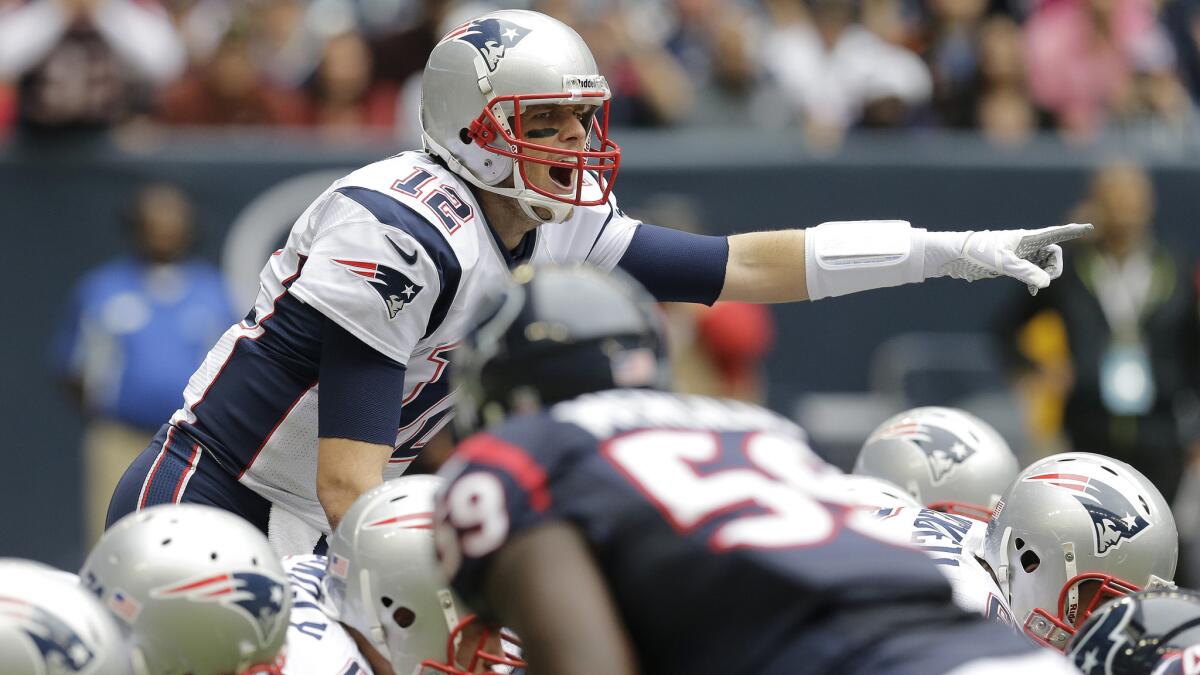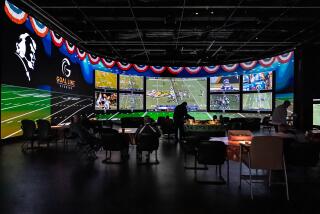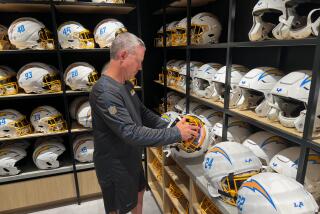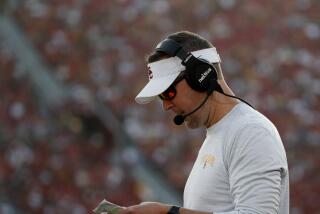NFL’s ‘Deflategate’ implicates Patriots quarterback Tom Brady

New England Patriots quarterback
Minutes before the start of January’s AFC championship game between Indianapolis and New England, officials grew suspicious: The Patriots’ game balls had vanished.
While officials frantically searched, a locker room attendant was in a bathroom with the two mesh bags of missing footballs, investigators said. He said he was using the urinal, though that restroom had no urinal.
The attendant, Jim McNally, sometimes used another name. He called himself the “deflator.”
McNally had hidden an air pump needle and used it to deflate the footballs, making it easier for Patriots quarterback Tom Brady to throw and his receivers to catch the balls, investigators said. McNally accepted sneakers and autographed footballs and jerseys as payment.
Those were among the damning findings of a 243-page report issued Wednesday by the National Football League, which had commissioned criminal lawyer Ted Wells to look into allegations — denied by team officials and Brady — that the Patriots deflated balls before the game. New England would win, 45-7, and go on to beat Seattle in the Super Bowl.
Wells concluded, after nearly four months of interviews as well as a review of texts and security camera footage, that it was “more probable than not” that two Patriots employees were involved in a deliberate effort to break the rules and Brady “was at least generally aware of the inappropriate activities.”
The NFL said it had not decided what penalties, if any, to impose. NFL Commissioner Roger Goodell said the league was considering what steps to take and whether any changes need to be made to pregame procedures.
Among other things, the league could levy substantial fines and suspensions, possibly of Brady, one of the best players in NFL history. By comparison, the NFL recently fined the Cleveland Browns $250,000 and suspended General Manager Ray Farmer for the first four games of the upcoming season because he sent text messages from the press box to team personnel on the sideline, ostensibly a less serious offense than deflating game balls.
Patriots owner Robert Kraft criticized the Wells report for dismissing scientific explanations for the underinflated balls.
“To say we are disappointed in its findings would be a gross understatement,” Kraft said.
The report includes a series of text messages between McNally, the Patriots’ employee assigned to work with game officials, and John Jastremski, an equipment assistant for the team. The exchanges suggest Brady liked his footballs inflated below the allowable minimum of 12.5 pounds per square inch.
In the texts, McNally said he expected new shoes and memorabilia for his troubles, writing, “Remember to put a couple sweet pig skins ready for tom to sign,” and adding, “Nice throw in some kicks and make it real special.”
McNally was annoyed that Brady kept demanding softer footballs. McNally told Jastremski he might overinflate the footballs so they resembled watermelons or rugby balls. “The only thing deflating sun[day].. is his passer rating,” McNally wrote. Wells said Brady appeared for a requested interview but “declined to make available any documents or electronic information (including text messages and emails) that we requested, even though those requests were limited to the subject matter of our investigation.”
The Patriots have for years been scrutinized for their tactics. Most notably, eight years ago, the league disciplined the franchise for improperly videotaping the sideline hand signals of New York Jets coaches. New England Coach Bill Belichick is known as “Belicheat” in some circles, and Hall of Fame coach Don Shula even used that nickname earlier this year.
The Patriots argue the pressure was lower in the footballs because they were inflated in the warm locker room, then brought outside into the cold, but investigators note the footballs used by the Colts were within the acceptable range of 13.5-12.5 psi.
Walt Anderson, the game referee, discovered that the bags of footballs for the Patriots were missing from the officials’ locker room just before kickoff. He said he had never encountered that in his 19 years as an official.
McNally had broken procedure by taking the balls and, on his way to the field, stopped for what video surveillance showed to be 1 minute, 40 seconds in a small bathroom, which he locked. Wells determined that would be sufficient time to bleed air from the Patriots’ footballs: 11 of the 13 tested were underinflated.
The report reads: “With minimal training (a single practice run), it is possible for an individual using a standard sports ball inflation needle to perform the following in approximately 60-70 seconds: open a door and enter a room, close the door, open a zippered bag containing 13 footballs, insert the needle into all footballs releasing a small amount of air from each, close and zipper the bag containing the footballs, and leave the room through the door, closing the door behind.”
A day before the game, Indianapolis officials had given a heads-up to the NFL about the Patriots possibly deflating footballs. Ryan Grigson, Colts general manager, sent an email to senior members of the league’s football operations department that included a note from Colts equipment manager Sean Sullivan.
Wrote Sullivan: “As far as the gameballs are concerned it is well known around the league that after the Patriots gameballs are checked by the officials and brought out for game usage the ballboys for the patriots will let out some air with a ball needle because their quarterback likes a smaller football so he can grip it better, it would be great if someone would be able to check the air in the gameballs as the game goes on so that they don’t get an illegal advantage.”
Before halftime at the conference championship, a Colts player intercepted a Brady pass and a team official gave it to an equipment man, who noticed the football felt soft. The Colts had what they needed to lodge a complaint.
sam.farmer@latimes.com
Twitter: @LATimesfarmer
More to Read
Go beyond the scoreboard
Get the latest on L.A.'s teams in the daily Sports Report newsletter.
You may occasionally receive promotional content from the Los Angeles Times.











